к°ңмҡ”
Designed with modularity in mind, the BX3M series provide versatility for a wide variety of materials science and industrial applications. With improved integration
with OLYMPUS Stream software, the BX3M provides a seamless workflow for standard microscopy and digital imaging users from observation to report creation.
User-Friendly

- вҖў Traditional Techniques Made Easy: Simple Illuminator
- вҖў Intuitive Microscope Controls: Simple FS and AS Settings
- вҖў Find the Focus Quickly: Focus Scale Index
- вҖў Consistent Illumination: Light Intensity Manager
- вҖў Easy and Ergonomic Operation
- вҖў Easy Restore Microscope Settings: Coded Hardware
- вҖў Basic Measurement Functions
Functional

- вҖў The Invisible Becomes Visible: MIX Observation
- вҖў Create All-in-focus Images: EFI
- вҖў Easily Move the Stage for Panorama: Instant MIA
- вҖў Capture Both Bright and Dark Areas: HDR
- вҖў Adaptable to Suit Observational and Analysis Preferences
- вҖў Accommodates a Wide Range of Samples
Precision Optics

- вҖў Superior Optical Performance: Wave Front Aberration Control
- вҖў Stable Color Temperature and High-Intensity White LED Illumination
- вҖў Support Precise Measurement: Auto Calibration
- вҖў Seamless Stitching : Image Shading Correction
Fully Customizable

- вҖў Various configurations to meet users' requirements
- вҖў Modular Design, Build Your System Your Way
Observation
Comfortable and Easy to Use
Traditional Techniques Made Easy: Simple Illuminator
The illuminator minimizes complicated actions that are usually necessary during microscope operation. A dial at the front of the illuminator enables the user to easily
change the observation method. An operator can quickly switch between the most frequently used observation methods in reflected light microscopy, such as from brightfield,
to darkfield, to polarized light, in order to readily change between different types of analysis. In addition, simple polarized light observation is adjustable by rotating the analyzer.

Intuitive Microscope Controls: Simple FS and AS Settings
Using the proper aperture stop and field stop settings provides good image contrast and makes full use of the numerical aperture of the objective.
The legend guides the user to the correct setting based on the observation method and objective in use.

Find the Focus Quickly: Focus Scale Index
The focus scale index on the frame supports quick access to the focal point. Operators can roughly adjust the focal point without viewing the sample
through an eyepiece, saving time when inspecting samples that are different heights.
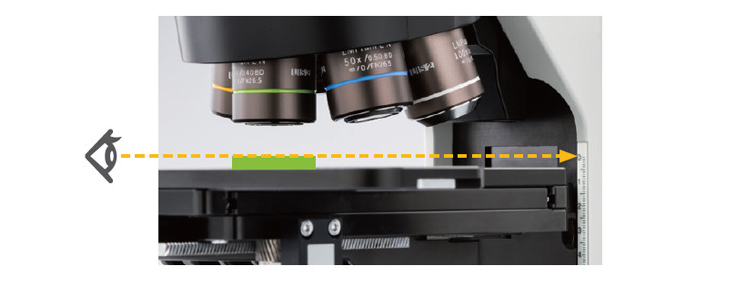
For Consistent Illumination: Light Intensity Manager
During the initial setup, the illumination intensity can be adjusted to match the specific hardware configuration of the coded illuminator and/or coded nosepiece.

Easy and Ergonomic Operation
Ergonomics are of the utmost importance for all users. Both standalone microscope users and those integrating with OLYMPUS Stream image analysis software benefit from ergonomic
handset controls that clearly display the hardware position. The simple handsets enable the user to focus on their sample and the inspection they need to perform.

A System Designed for Image Analysis
For Restoring Microscope Settingsпјҡ Coded Hardware
The BX3M employs new coded functions that integrate the microscopeвҖҷs hardware settings with OLYMPUS Stream image analysis software. The observation method, illumination intensity,
and objective position are all recorded within the software and/or the handset. The coded functions enable the microscope settings to be automatically saved with each image, making it easier
to reproduce the settings at a later time and provide documentation for reporting purposes. This saves the operator time and minimizes the chance that an incorrect setting will be used.
The current observation settings are always clearly displayed both on the hand switch and in the software.

Features
Functionality for a Range of Inspection and Analytical Tasks
The Invisible Becomes Visible: MIX Observation
The BX3MвҖҷs MIX observation technology combines brightfield and darkfield illumination methods. The LEDвҖҷs in the MIX slider shine directional darkfield on the sample, which is similar to traditional darkfield,
but with more flexibility. This combination of brightfield and directional darkfield is called MIX illumination, and is especially helpful to highlight defects and differentiate raised surfaces from depressions.

Conventional
Brighfield shines the light straight down on the sample while traditional darkfield highlights scratches and imperfections of a flat surface by illuminating the sample from the side of the objective.
Advanced
MIX is a combination of brighfield and directional darkfield from a ring of LEDвҖҷs. The LEDвҖҷs can be adjusted to select which direction to illuminate from.
Easily Move the Stage for Panorama: Instant MIA
You can now stitch images easily and quickly just by moving the XY knobs on the manual stage; no motorized stage is necessary. OLYMPUS Stream uses pattern recognition to generate a panoramic image giving users a wider field of view than a single frame.

Create All-in-focus Images: EFI
The Extended Focus Imaging (EFI) function within OLYMPUS Stream captures images of samples whose height extends beyond the depth of focus of the objective and stacks them together to create one image that is all in focus. EFI can be executed with either a manual or motorized Z-axis and creates a height map for easy structure visualization. It is also possible to construct an EFI image while offline within Stream Desktop.

Capture Both Bright and Dark Areas: HDR
Using advanced image processing, high dynamic range (HDR) adjusts for differences in brightness within an image to reduce glare. HDR improves the visual quality of digital images thereby helping to generate professional-looking reports.

Adaptable to Suit Observational and Analysis Preferences
Wide Choice of Observation Methods
Reflected light microscopy spans a range of applications and industries.These are just some of the examples of what can be achieved using different observation methods, such as brightfield(BF), darkfield(DF), differential Interference Contrast(DIC), polarized light(PL), fluorescence(FL), infra-red(IR), and transmitted light(TL).
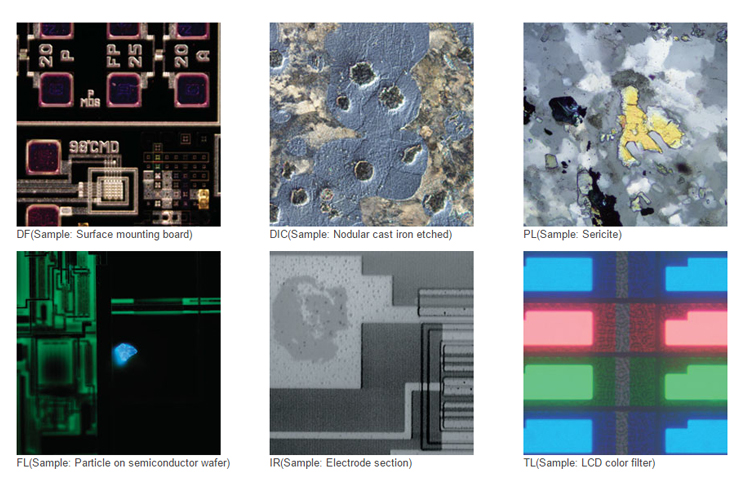
Routine or Basic Measurement Functions
Various measurement functions are available through OLYMPUS Stream so that the user can easily obtain useful data from the images. For quality control and inspection, measuring features on images are often required. All levels of OLYMPUS Stream licenses include interactive measurement functions such as distances, angles, rectangles, circles, ellipses, and polygons. All measured results are saved with the image files for further documentation.

Count and Measure
Object detection and size distribution measurement are among the most important applications in digital imaging. OLYMPUS Stream incorporates a detection engine that utilizes threshold methods to reliably separate objects (e.g., particles, scratches) from the background.
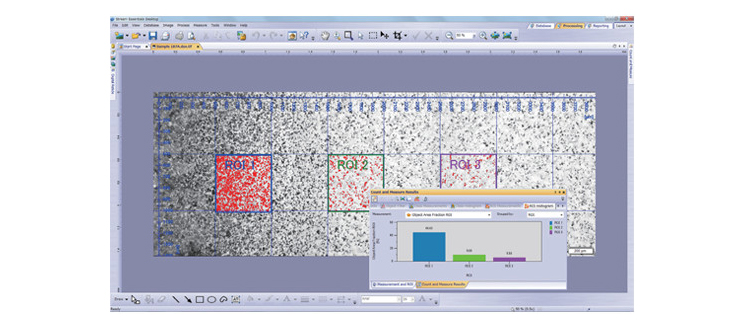
Materials Science Solutions

OLYMPUS Stream offers an intuitive, workflow-oriented interface for complex image analysis. At the click of a button, the most complex image analysis tasks can be executed quickly, precisely, and in compliance with most common industrial standards. With a significant reduction in processing time for repeated tasks, materials scientists can concentrate on analysis and research. Modular add-ins for inclusions and intercept charts are easily performed at any time.
3D Sample Measurement
When using an external motorized focus drive, an EFI image can be quickly captured and displayed in 3D. The height data acquired can be used for 3D measurements on the profile or from the single view image.

Accommodates a Wide Range of Samples
View More Sample Types and Sizes
The new 150 Г— 100 mm stage provides a longer travel in the X direction than previous models. This, together with the flat-top design, enables large samples or multiple samples to be easily placed on the stage. The stage plate has tapped holes to attach a sample holder. The larger stage provides flexibility to users by enabling them to inspect more samples on one microscope, saving valuable lab space. The stageвҖҷs adjustable torque facilitates fine positioning under high magnification with a narrow field of view.
Flexibility for Sample Height and Weight

Samples up to 105 mm can be mounted on the stage with the optional modular unit. Due to the improved focusing mechanism, the microscope can accommodate a total weight (sample + stage) of up to 6 kg. This means that larger and heavier samples can be inspected on the BX3M, so fewer microscopes are required in the lab. By strategically positioning a rotatable holder for 6-inch wafers off-center, users can observe the whole wafer surface by just rotating the holder when moving through the 100 mm travel range. The stage's torque adjustment is optimized for ease of use and the comfortable handle grip makes it easy to find the region of interest of the sample.
Flexibility for Sample Size

When samples are two large to place on a traditional microscope stage, the core optical components for reflected light microscopy can be configured in a modular configuration. This modular system, the BXFM, can be mounted to a larger stand via a pole or mounted to another instrument of choice using a mounting bracket. This enables users to take advantage of OlympusвҖҷ renowned optics even when their samples are unique in size or shape.
Protect Electronic Devices from Electrostatic Discharge: ESD Compatible
The BX3M has an ESD dissipation capability that protects electronic devices from static electricity caused by human or environmental factors.
Image Quality
A History of Leading-edge Optics
Superior Optical Performanceпјҡ Wave Front Aberration Control
When using a microscope for advanced research or system integration, optical performance must be standardized for all objectives. OlympusвҖҷ UIS2 objectives go beyond conventional numerical aperture (NA) and working distance (WD) performance standards by providing wave front aberration control, that minimizes the aberrations that lower resolution.

Stable Color Temperature and High-Intensity White LED Illumination
The BX3M utilizes a high-intensity white LED light sources for both reflected and transmitted light. The LED maintains a consistent color temperature regardless of intensity. LEDs provide efficient, long-life illumination that is ideal for inspecting materials science applications.

Superior Quality for Advanced Performance
Support Precise Measurementпјҡ Auto Calibration

Similar to digital microscopes, automatic calibration is available when using OLYMPUS Stream. Auto-calibration eliminates human variability in the calibration process leading to more reliable measurements. Auto calibration uses an algorithm that automatically calculates the correct calibration from an average of multiple measurement points. This minimizes variance introduced by different operators and maintains consistent accuracy, improving reliability for regular verification.
Seamless Stitching : Image Shading Correction
Shading correction is implemented within OLYMPUS Stream software to accommodate for shading around the corners of an image. When used with intensity threshold settings, shading correction provides more precise analysis. Additionally, a more uniform panoramic image is acquired when tiling images with MIA.

Left image: Raw image illustrating shading where images were stitched together Right image: Shading correction produces even illumination across the field of view
Configurations
Modular Design, Build Your System Your Way
Microscope Frames

There are two microscope frames for reflected light, one also has transmitted Light; capability. An adapter is available to raise the illuminator to accommodate taller samples.
Stands

For microscopy applications where the sample will not fit on a stage, the illuminator and optics can be mounted to a larger stand or to another piece of equipment.
Tubes
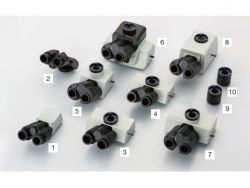
For microscope imaging with eyepieces or for camera observation, select tubes by imaging type and operatorвҖҷs posture during observation.
Illuminators
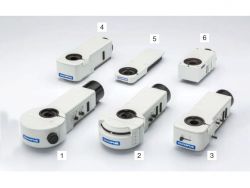
The illuminator projects light onto the sample based on the observation method selected. Software interfaces with coded illuminators to read the cube position and automatically recognize the observation method.
Light Sources

Light sources and power supplies for sample illumination, choose the appropriate light source for the observation method.
Nosepieces

Attachment for objectives and sliders. Select by the number of objectives needed and types; also with/without slider attachment.
Sliders

Select the slider to compliment traditional brighfield observation. The DIC slider provides topographic information about the sample with options to maximize contrast or resolution. The MIX slider provides illumination flexibility with a segmented LED source in the darkfield path.
Controls Box and Hand Switches

Control boxes for interfacing microscope hardware with a PC and hand switches for hardware display and control.
Stages

Stages and stage plates for sample placement. Select based on sample shape and size.
Camera Adapters

Adapter for camera observation. Selectable from required field of view and magnification. Actual observation range can be calculated using this formula:
actual field of view (diagonal mm) = viewing field (viewing number) Г· objective magnification.
Eyepieces
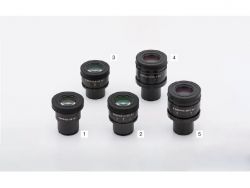
Eyepiece for viewing directly into the microscope. Select based on desired field of view.
Optical Filters

Optics filters convert sample exposure light to various types of illumination. Select the appropriate filter for observation requirements.
Condensers

Condensers collect and focus transmitted light. Use for transmitted light observation.
Mirror Units

Mirror unit for BX3M-URAS-S. Select the unit for required observation.
Intermediate Tubes

Various types of accessories for multiple purposes. For use between tube and illuminator.
UIS2 Objectives
Objectives magnify the sample. Select the objective that matches the working distance, resolving power and observation method for the application.
мӮ¬м–‘
BX53M Specifications (for Reflected and Reflected/Transmitted Light Combination)
| |
BX53MTRF-S |
BX53MRF-S |
BXFM |
| Optical system |
UIS2 optical system (infinity-corrected) |
| Microscope frame |
Illumination |
Reflected/transmitted |
Reflected |
| Focus |
Stroke: 25 mm
Fine stroke per rotation: 100 Ојm
Minimum graduation: 1 Ојm
With upper limit stopper, torque adjustment for coarse handle |
Stroke: 30 mm
Fine stroke per rotation: 200 Ојm
Minimum graduation: 2 Ојm
With torque adjustment for coarse handle |
| Max. specimen height |
35 mm (w/o spacer)
75 mm (with BX3M-ARMAD) |
65 mm (w/o spacer)
105 mm (with BX3M-ARMAD) |
Depends on the mounting configuration |
| Observation tube |
Wide-field FN 22 |
Inverted: binocular, trinocular, tilting binocular
Erect: trinocular, tilting binocular |
| Super-wide-field FN 26.5 |
Inverted: trinocular
Erect: trinocular, tilting trinocular |
| Reflected light illumination |
Traditional observation technique |
BX3M-RLAS-S
Coded, white LED, BF/DF/DIC/POL/MIX FS, AS (with centering mechanism), BF/DF interlocking
BX3M-KMA-S
White LED, BF/DIC/POL/MIX FS, AS (with centering mechanism), BF/DF interlocking
BX3M-RLA-S
100W/50W halogen lamp, white LED, BF/DF/DIC/POL/MIX/ FS, AS (with centering mechanism), BF/DF interlocking, ND filter
|
| - |
U-KMAS
White LED, 100W halogen
Fiber illumination, BF/DIC/POL/MIX |
| Fluorescence |
BX3M-URAS-S
Coded, 100W mercury lamp, 4 position mirror unit turret, (standard: WB, WG, WU+BF etc)
With FS, AS (with centering mechanism), with shutter mechanism |
| Transmitted light |
White LED
Abbe/long working distance condensers |
- |
| Revolving nosepiece |
For BF |
Sextuple, centering sextuple, septuple, coded quintuple (optional motorized revolving nosepieces) |
| For BF/DF |
Sextuple, quintuple, centering quintuple, coded quintuple (optional motorized revolving nosepieces) |
| Stage |
Coaxial left (right) handle stage:
76 mm Г— 52 mm, with torque adjustment
Large-size coaxial left (right) handle stage:
105 mm Г— 100 mm, with locking mechanism in Y-axis
Large-size coaxial right handle stage:
50 mm Г— 100 mm, with torque adjustment and locking mechanism in Y-axis |
- |
| Weight |
Approx. 18.3 kg
(Microscope frame 7.6 kg) |
Approx. 15.8 kg
(Microscope frame 7.4 kg) |
Approx. 11.1 kg
(Microscope frame 1.9 kg) |
BX53M Specifications (for IR Observation)
|
BX53MRF-S |
BXFM |
| IR Observation tube |
Wide field FN 22 |
Inverted: trinocular |
| Reflected light illumination |
IR observation |
BX3M-RLA-S
100W/50W halogen lamp for IR, BF/IR, AS (with centering mechanism), with band pass filter (1100 nm, 1200 nm)
BX3M-URAS-S
100W/50W halogen lamp for IR, BF/IR, AS (with centering mechanism), with band pass filter (1100 nm, 1200 nm), with shutter mechanism |
| - |
U-KMAS
100W/50W halogen for IR, BF/IR |
| Revolving nosepiece |
For BF |
Sextuple, centering sextuple, septuple, coded quintuple (optional motorized revolving nosepieces) |
|
| Stage (X Г— Y) |
Coaxial left (right) handle stage:
76 mm Г— 52 mm, with torque adjustment
Large-size coaxial left (right) handle stage:
105 mm Г— 100 mm, with locking mechanism in Y-axis
Large-size coaxial right handle stage:
150 mm Г— 100 mm, with torque adjustment and locking mechanism in Y-axis |
- |
| Weight |
Approx. 18.9 kg (Microscope frame 7.4 kg) |
Approx. 11.6 kg (Microscope frame 1.9 kg) |
BX53M Specifications (for Polarized Observation)
|
BX53MTRF-S |
| Polarized light intermediate attachment (U-CPA or U-OPA) |
Wide field FN 22 |
Inverted: binocular, trinocular, tilting binocular
Erect: trinocular, tilting binocular |
| Bertrand lens |
Focusable (for U-CPA only) |
| Bertrand field stop |
Гё3.4 mm diameter (fixed) (for U-CPA only) |
| Engage or disengage Bertrand lens changeover between orthoscopic and conoscopic observation |
Position of slider в—Ҹ in
Position of slider в—Ӣ out
(for U-CPA only) |
| Analyzer Slot |
Rotatable analyzer with slot (U-AN360P-2) |
| Analyzer (U-AN360P-2) |
360В° dial-rotatable
Rotatable minimum angle 0.1В° |
| Revolving centerable nosepiece (U-P4RE) |
Quadruple, centerable attachable components: 1/4 wavelength retardation plate (U-TAD),
tint plate (U-TP530) and various compensators can be attached using plate adapter (U-TAD) |
| Stage (U-SRP) |
Polarizing rotatable stage with 3-point centering function
360В° rotatable, lockable in any position, 360В° graduated in 1В° increments
(minimum retardation resolution 6', using vernier scale)
45В° click stop function
Mechanical stage (U-FMP) can be attached |
| Condenser (U-POC-2) |
Achromat strain-free condenser (U-POC-2), 360В° rotatable polarizer with swing-out achromatic top-lens
Click stop at position "0В°" is adjustable
NA 0.9 (top-lens in)
NA 0.18 (top-lens out)
Aperture iris diaphragm: adjustable from 2 mm to 21 mm diameters |
| Weight |
Approx. 16.2 kg (Microscope frame 7.6 kg) |
BX53M/BXFM ESD Units
| Items |
Microscope frame: BX53MRF-S, BX53MTRF-S
Illuminator: BX3M-KMA-S, BX3M-RLA-S, BX3M-URAS-S, BX3M-RLAS-S
Nosepiece: U-D6BDRES-S, U-D6RE-ESD, U-D5BDREMC-ESD, U-5RES-ESD
Stage: U-SIC4R2, U-SIC4L2, U-MSSP4 |
|
